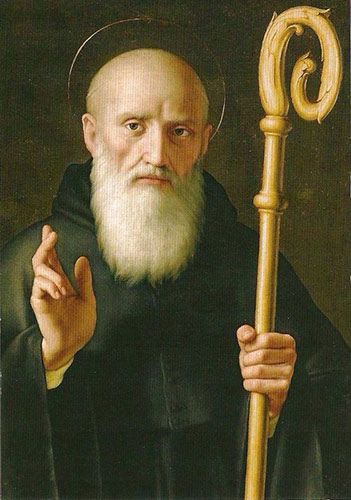Saint Benedict of Nursia - Giving European Monasticism its Enduring Structure
Jul 8th 2024

The History and Importance of Saint Benedict of Nursia in the Catholic Church
Saint Benedict of Nursia, born around 480 AD in Nursia (now Norcia, Italy), is one of the most influential figures in the history of Western monasticism and the Catholic Church. His contributions extend far beyond the confines of his own life, leaving a legacy that has shaped Christian spirituality, communal living, and education for centuries.
Early Life and Call to Monasticism
Benedict was born into a noble Roman family during a time of political and social upheaval following the fall of the Western Roman Empire. Seeking a deeper relationship with God, he abandoned his studies in Rome around the age of 20 and chose a life of solitude and prayer in the mountains of Subiaco. During this period, Benedict lived as a hermit in a cave, dedicating himself to asceticism and spiritual discipline.
Founding of Monasteries
Benedict's reputation for holiness and wisdom attracted followers, leading him to establish a monastic community. His first significant foundation was at Monte Cassino around 529 AD. This monastery became the cradle of Benedictine monasticism, serving as a model for future monastic communities throughout Europe.
The Rule of Saint Benedict
One of Benedict’s most enduring legacies is his "Rule," a comprehensive guide for monastic life that emphasizes balance, moderation, and community living. The Rule of Saint Benedict covers aspects of monastic life, including prayer, work, and communal living, with a strong focus on humility, obedience, and stability.
Key Principles of the Rule:
- Ora et Labora (Prayer and Work): Benedict emphasized a balanced life of prayer and labor. Monks were to dedicate specific times to communal prayer (the Divine Office) and work, whether manual labor or intellectual pursuits.
- Community Life: The Rule stressed the importance of living in a community under the authority of an abbot. This communal living was seen as a way to practice charity, humility, and obedience.
- Hospitality: Benedictine monasteries were to be places of hospitality, welcoming guests as if they were Christ himself.
- Stability and Conversion: Monks were encouraged to commit to lifelong membership in a single community (stability) and to continual personal conversion and growth in holiness.
Impact on Western Civilization
Benedict's influence extended far beyond the monastic walls. The principles he established played a crucial role in preserving and advancing Western culture during the Middle Ages. Monasteries became centers of learning, preserving classical texts, promoting agricultural innovation, and providing education. The Benedictine commitment to copying manuscripts helped preserve important religious and philosophical works through the turbulent times of the early medieval period.
Saint Benedict’s Legacy
Saint Benedict is often called the "father of Western monasticism" due to the widespread adoption of his Rule. His monastic vision laid the groundwork for the development of Christian monasticism in the West, influencing countless religious orders and communities.
Patronage
Benedict is the patron saint of Europe, recognized for his role in shaping European culture and spirituality. He is also invoked for protection against poison, witchcraft, and various dangers, reflecting the legendary accounts of his life where he miraculously survived several assassination attempts.
Conclusion
Saint Benedict of Nursia's contributions to the Catholic Church and Western civilization are profound and lasting. Through his Rule, he provided a framework for a balanced and disciplined life that has guided countless individuals in their spiritual journeys. His legacy lives on in the many Benedictine communities around the world, continuing to influence Christian thought, culture, and spirituality. Saint Benedict’s emphasis on prayer, work, and community remains a timeless model for living a holy and purposeful life.

